
Agriculture and Crops
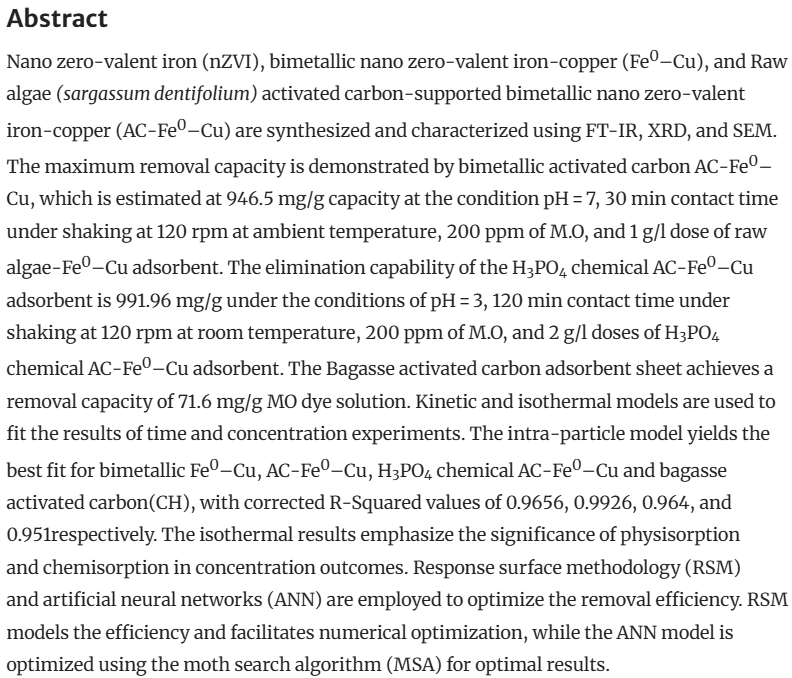
Bio-inspired adsorption sheets from waste material for anionic methyl orange dye removal
Abstract: Nano zero-valent iron (nZVI), bimetallic nano zero-valent iron-copper (Fe0–Cu), and Raw algae (sargassum dentifolium) activated carbon-supported bimetallic nano zero-valent iron-copper (AC-Fe0–Cu) are synthesized and characterized using FT-IR, XRD, and SEM. The maximum removal capacity is demonstrated by bimetallic activated carbon AC-Fe0–Cu, which is estimated at 946.5 mg/g capacity at the condition pH = 7, 30 min contact time under shaking at 120 rpm at ambient temperature, 200 ppm of M.O, and 1 g/l dose of raw algae-Fe0–Cu adsorbent. The elimination capability of the H3PO4
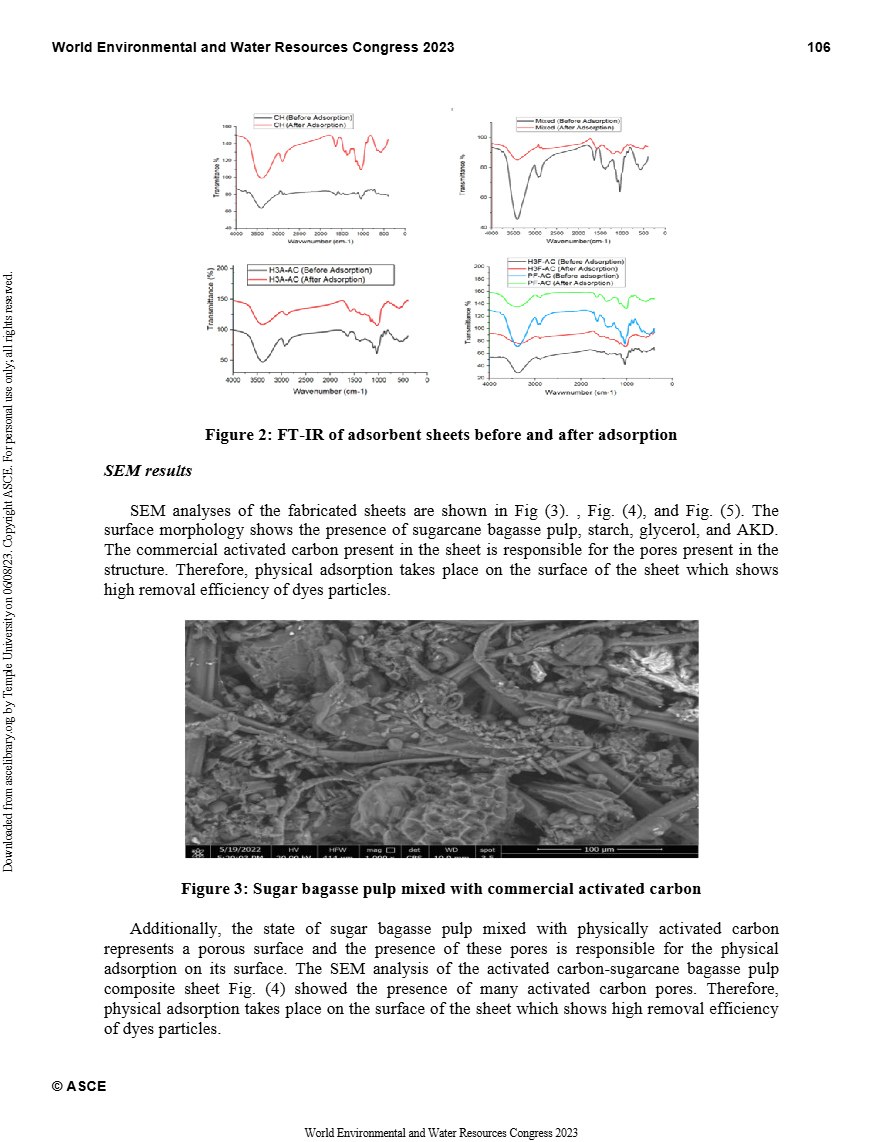
Valorization of Agricultural and Marine Waste for Fabrication of Bio-Adsorbent Sheets
Industrial wastewater often contains considerable amounts of toxic pollutants that would endanger public health and the environment. In developing countries, these toxins are often discharged into natural ecosystems without pretreatment as it requires costly treatment processes, which causes long-term harmful socioeconomic impacts. Employing wastewater treatment plants using physical, biological, and chemical methods to clean the wastewater is considered by many nations the answer to the environmental crises. The treated water could be used for targeting the irrigation systems in its majority

CNTFET-based ternary address decoder design
With the end of Moore's law, new paradigms are investigated for more scalable computing systems. One of the promising directions is to examine the data representation toward higher data density per hardware element. Multiple valued logic (MVL) emerged as a promising system due to its advantages over binary data representation. MVL offers higher information processing within the same number of digits when compared with binary systems. Accessing memory is considered one of the most power- and time-consuming instructions within a microprocessor. In the quest for building an entire ternary
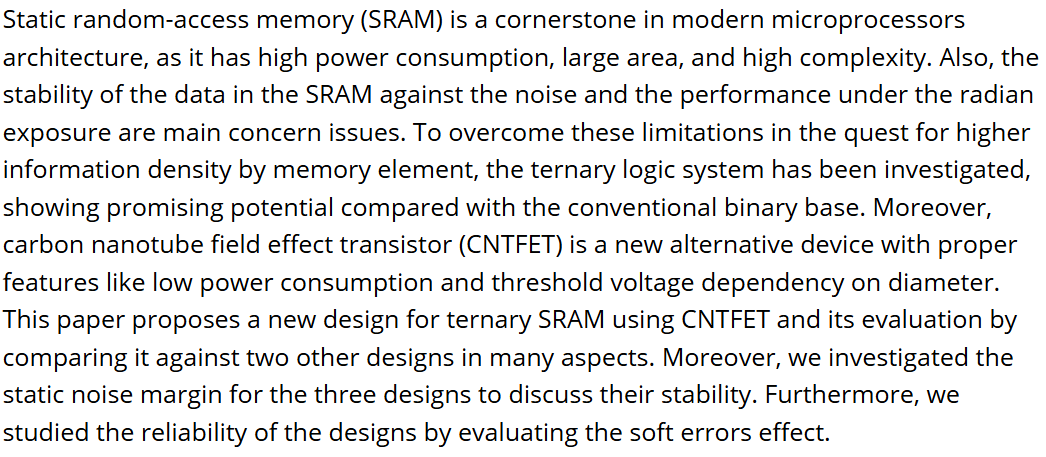
Ternary SRAM circuit designs with CNTFETs
Static random-access memory (SRAM) is a cornerstone in modern microprocessors architecture, as it has high power consumption, large area, and high complexity. Also, the stability of the data in the SRAM against the noise and the performance under the radian exposure are main concern issues. To overcome these limitations in the quest for higher information density by memory element, the ternary logic system has been investigated, showing promising potential compared with the conventional binary base. Moreover, carbon nanotube field effect transistor (CNTFET) is a new alternative device with
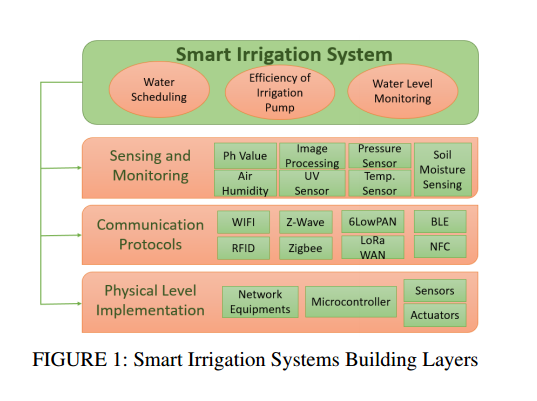
Smart Irrigation Systems: Overview
Countries are collaborating to make agriculture more efficient by combining new technologies to improve its procedure. Improving irrigation efficiency in agriculture is thus critical for the survival of sustainable agricultural production. Smart irrigation methods can enhance irrigation efficiency, specially with the introduction of wireless communication systems, monitoring devices, and enhanced control techniques for efficient irrigation scheduling. The study compared on a wide range of study subjects to investigate scientific approaches for smart irrigation. As a result, this project
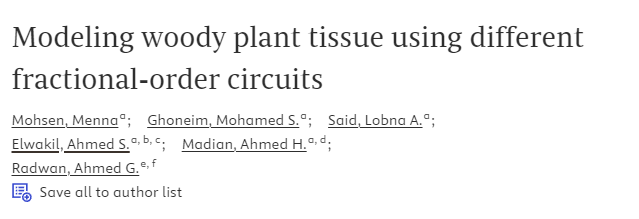
Modeling woody plant tissue using different fractional-order circuits
This chapter presents results on the most suitable bio-impedance circuits for modeling woody plants. The modified double-shell, the modified triple Cole-Cole, and the traditional wood circuit models are compared for fitting experimentally measured data. Consequently, a modified circuit model is proposed. This model gives the best results for all interelectrode spacing distances when compared to the other circuits. All impedance data have been measured using the research-grade SP150 electrochemical station in the frequency range 0.1 Hz to 200 kHz. The fitting is done using the Zfit of the
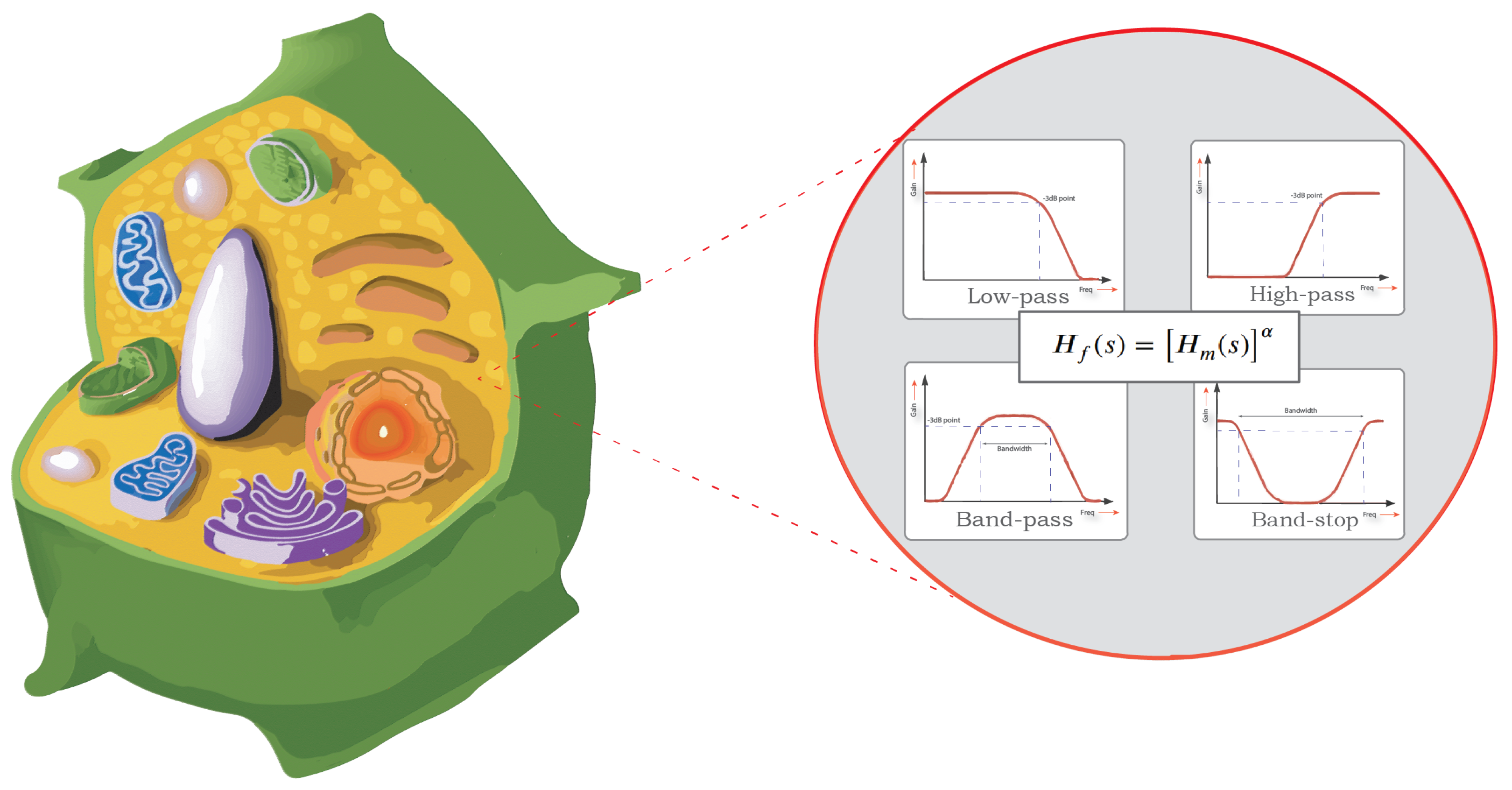
Plant Tissue Modelling Using Power-Law Filters
Impedance spectroscopy has became an essential non-invasive tool for quality assessment measurements of the biochemical and biophysical changes in plant tissues. The electrical behaviour of biological tissues can be captured by fitting its bio-impedance data to a suitable circuit model. This paper investigates the use of power-law filters in circuit modelling of bio-impedance. The proposed models are fitted to experimental data obtained from eight different fruit types using a meta-heuristic optimization method (the Water Cycle Algorithm (WCA)). Impedance measurements are obtained using a
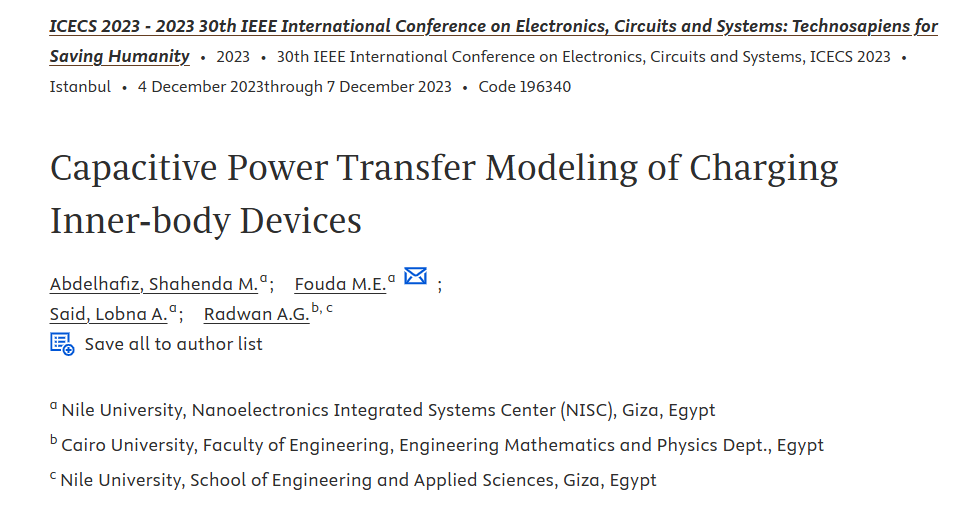
Capacitive Power Transfer Modeling of Charging Inner-body Devices
Wireless power transfer (WPT) is highly desirable for applications with battery restrictions, such as biomedical applications. For example, in the case of implantable devices, power is transmitted through the human body, which has dielectric characteristics that must be considered during the design of the WPT system. This paper examines capacitive power transfer through the human body and formulates the complete WPT system, including the human body model. The power delivered to the implantable device is also analyzed. Finally, the system efficiency is discussed under different body and load
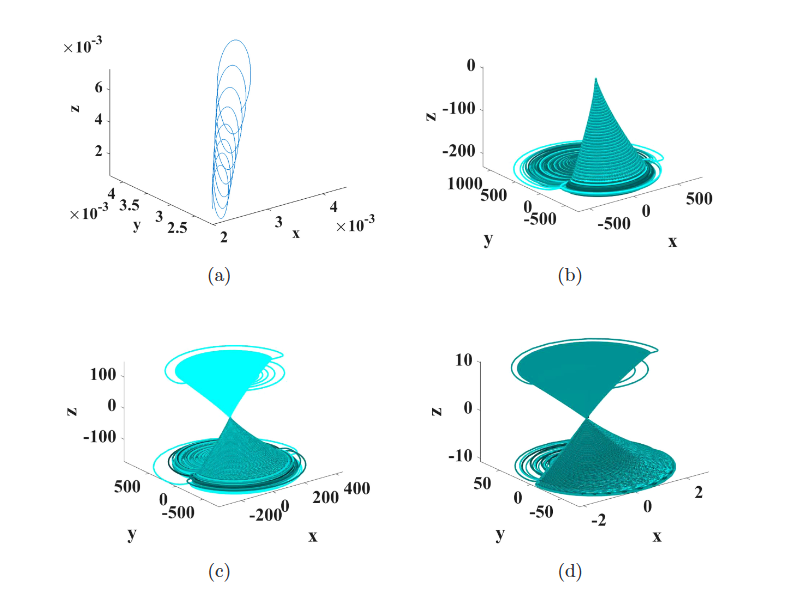
Numerical Sensitivity Analysis and Hardware Verification of a Transiently-Chaotic Attractor
We introduce a new chaotic system with nonhyperbolic equilibrium and study its sensitivity to different numerical integration techniques prior to implementing it on an FPGA. We show that the discretization method used in numerically integrating the set of differential equations in MATLAB and Mathematica does not yield chaotic behavior except when a low accuracy Euler method is used. More accurate higher-order numerical algorithms (such as midpoint and fourth-order Runge-Kutta) result in divergence in both MATLAB and Mathematica (but not Python), which agrees with the divergence observed in an
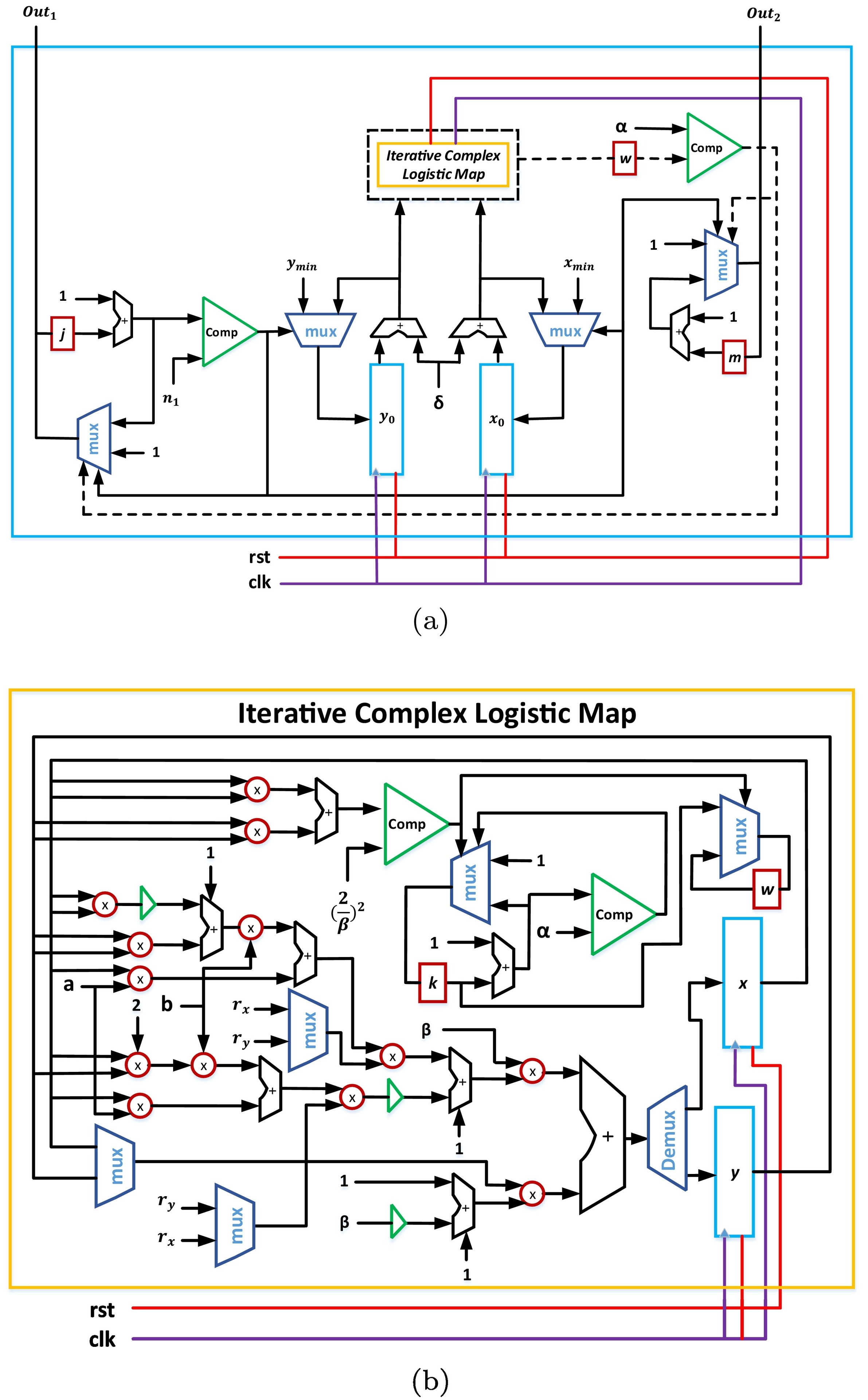
FPGA realization of fractals based on a new generalized complex logistic map
This paper introduces a new generalized complex logistic map and the FPGA realization of a corresponding fractal generation application. The chaotic properties of the proposed map are studied through the stability conditions, bifurcation behavior and maximum Lyapunov exponent (MLE). A relation between the mathematical analysis and fractal behavior is demonstrated, which enables formulating the fractal limits. A compact fractal generation process is presented, which results in designing and implementing an optimized hardware architecture. An efficient FPGA implementation of the fractal behavior